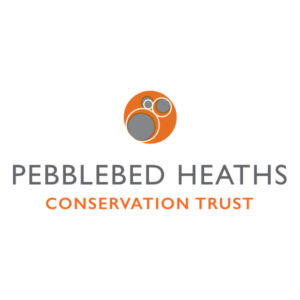
Sign-up to the Friends of the Commons newsletter to keep up-to-date with the latest news and information.
Declared in 2020 the Pebblebed Heaths join a select network of conservation areas protecting the finest examples of our nation’s wildlife. The site is unique in demonstrating how a large private Estate can show conservation leadership and partner with public and third sector bodies to deliver a landscape of the highest public value.
The first National Nature Reserves (NNRs) were designated in the 1950s and today over 200 NNRs support research, education and recreation, allowing people to enjoy and engage with the nation’s best natural heritage. The NNR declaration of the Pebblebed Heaths complements those designations already previously awarded including Site of Special Scientific Interest (SSSI), Special Area of Conservation (SAC) and a Special Protection Area (SPA).
The Pebblebed Heaths plays an invaluable role in supporting the nature network and wellbeing of the communities of East Devon. Find out more about the site and its history and management here and read our answers to Frequently Asked Questions.
Strategic oversight of the NNR is provided by an NNR Advisory Board with management partners being Clinton Devon Estates, the East Devon Pebblebed Heaths Conservation Trust, the RSPB and the Devon Wildlife Trust.
We intend to use the newly granted National Nature Reserve status as an opportunity to engage with the public to understand what the heaths mean to those that use them so that our management approach continues to develop with societal support.
You can find out more about our aspirations and what we have planned for 2023-2028 in our Master Plan
The unique landscape of the Pebblebed Heaths is the result of people and nature living and working together for thousands of years; shaped by the underlying Triassic geology.
The Pebblebed Heaths NNR is the largest block of lowland heath remaining in Devon. Not only is the heaths internationally important for it’s rare habitats and the specialised wildlife it supports, but it is also home to ancient monuments and surprising 20th century remains, which highlight the fascinating human history of this much loved place. The heaths may appear a natural wilderness but need careful ongoing work to keep them at their best and allow the special wildlife that live here to thrive. While Dartford warblers forage and nest in the dese gorse, sliver studded blue butterflies rely on areas with sparse heather and warm bare ground, and an array of dragonflies hunt for prey in and around the black bog rush in the wet valleys. Lonely pines provide perching spots for churring nightjar or signing yellow hammers, and patches of scrubby young willow and birch teem with insects. By keeping the ever-regenerating trees in check, this dynamic patchwork creates more space for more nature in the heathland landscape.
Affectionately known locally as ‘The Commons’, the Pebblebed Heaths are a popular place for local communities to enjoy the outdoors. Whether to connect with nature, spend time with family and friends, to ride the trails on a mountain bike or horse, or to take in the views while on a dog walk, there are over 80km of tracks and paths to explore.
We ask that all visitors respect, protect, enjoy the Pebblebed Heaths. For more information on what activities are permitted and those that require specific permission please see here.
For information specific to a particular area please follow the link to the website of the relevant land manager.
For Woodbury, Colaton Raleigh, Hawkerland, Bicton, East Budleigh and Dalditch commons, plus Dalditch Plantation and Mutters Moor please see the Pebblebed Heaths Conservation Trust website.
For Aylesbeare, Withycombe Raleigh and Venn Ottery commons please see the RSPB website.
For Bystock and Venn Ottery common please see the Devon Wildlife Trust website.
If you need any further details please contact us.

Sign-up to the Friends of the Commons newsletter to keep up-to-date with the latest news and information.